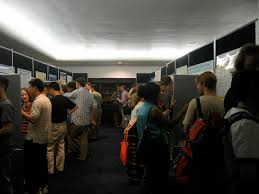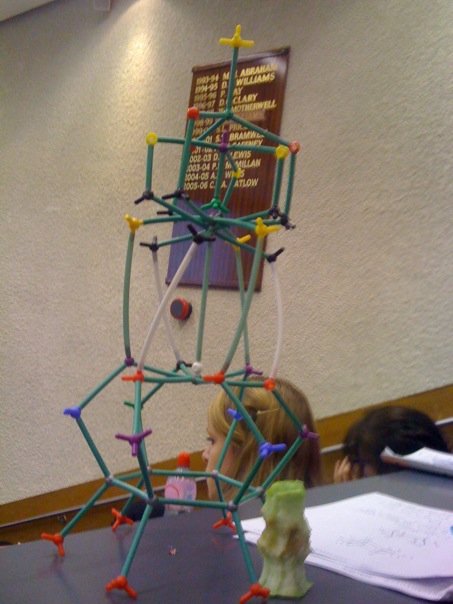Different Flavours of Research
Updated to a new blog! Beep Bloop Testing Testing..
I’ve finally redone the git pages to a rather exciting new theme (hooray!) and returned to the UK after spending time in Germany doing research for a PhD.
As a test piece to check the website update, I’ve written a short, foolish piece musing on Bio Research Posters.
Having done an Msc degree in Chem w/Math in the earlier time of this blog, I felt myself battlehardened, grungy and full of the utmost vitriolic enthusiasm for upcoming research gruel. Experiencing my share of shiney shiney Photoshop work, presentations, stylish dressing-up and feathery displays, I imagined I was ready for the PhD world of presenting the simple, elegant thing known as The Poster.
Typically shown off both within the department and at topic-related conferences, The Poster (TP) is a typical showpiece for both the budding graduate student, rosy-cheeked undergrad or somewhat scarred lecturer heaving to & fro for tenureship. It’s a manifesto and a funding-courtship of sorts, with the grants-mating-ritual acted out artfully in the ubiquitously gossip-laden environment of the conference halls amid tea-drinking aficionados.

The process of birthing this vast and complex document is - (analogy it if you will) not un-akin to drawing a rapidly growing tadpole spawn. The initial process is somewhat sketchy, unsure and hazy on the details. As research progresses, we see more definitive outlines in future iterations of TP and the spawn, excited to life by accidents of the undergrad becomes a rather beautiful, complex organism given time and nurturing. Imagine however, that you are drawing with two hooks and a burnt log for charcoal. You require some practice to get good.
Now, I had known all about this process of course. Chemistry is a fabulous thing to present - one can (if feeling playful) get out their model sets and demonstrate basic geometrical or conformational ideas. One can depict with some level of assurance some basic processes. One draws graphs like a boss - bold and detailed, excessively analysed and almost everything considered. We stand on shoulders of giants who’ve had a nice balcony extension done to their lapels and intricate railing, warning signs and protective alcoves built-in to deal with shaky footing. During conferences one argues with vigor, spouting truths and demi-truths, interweaving to form a silken nanocarbon tapestry upon which smug chemists then rest, as if hammocks made from the leathery skins of conquered opponents.

I had known my foes in chemistry. I knew my footing, and the dance was on a level surface. …I had yet to know the intricacies of difference laden in doing a PhD in Experimental Medicine / Neuroscience.
An initial wonder upon encountering the (for me) previously remote neuro TP was the Houdini-like eyebrow disappearing astonishment of my fellow campers on my delineation of graphs. A truth slowly rolled out from my new medical sphere of the secret hatred of any and all axis bars and overly obvious legends. In my naivety it almost appeared that a plotful disguise was under way: don’t let any outsiders know this graph is a graph. Make it abstract art, or children’s hand-paintings, or even accidental background dots - but don’t let them know. What’s that legend I see? Make it smaller! The axes? Invisible! Put two small lines with annotation for scale, way down there in the corner… well done.
Instead of big graphs, surround your data by beautiful pictures of cells, or anatomical and mechanical diagrams. Throw a few descriptions, making sure to use abbreviations for the countless (I say, countless) terminologies. For goodness’ sake, don’t write “Using two photon microscopy, we investigated the lateral geniculate nucleus..” when you could much better write “Using 2P on LGN..”. A thoroughly fascinating landscape, where I adapted to the shifting footing (as in biology we stand indeed on shifty quicksands - with little patches of concrete bulwarks straining against the scientists clinging to their walls) and implemented their mythical traditions.
Is this an exaggeration, or the fond remembrances of a bewildered moment prior to assimilation? I cannot know, I only recount. Suffice to say however that posters and their defense differs substantially - and biologists, careful of their footing, are quick to jump to new ground.